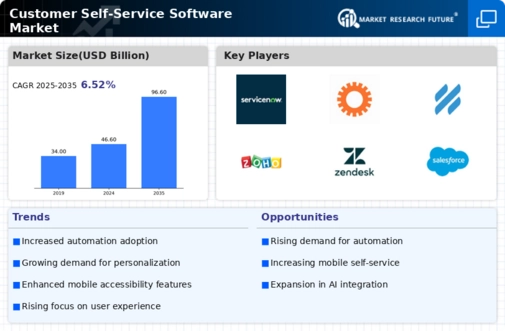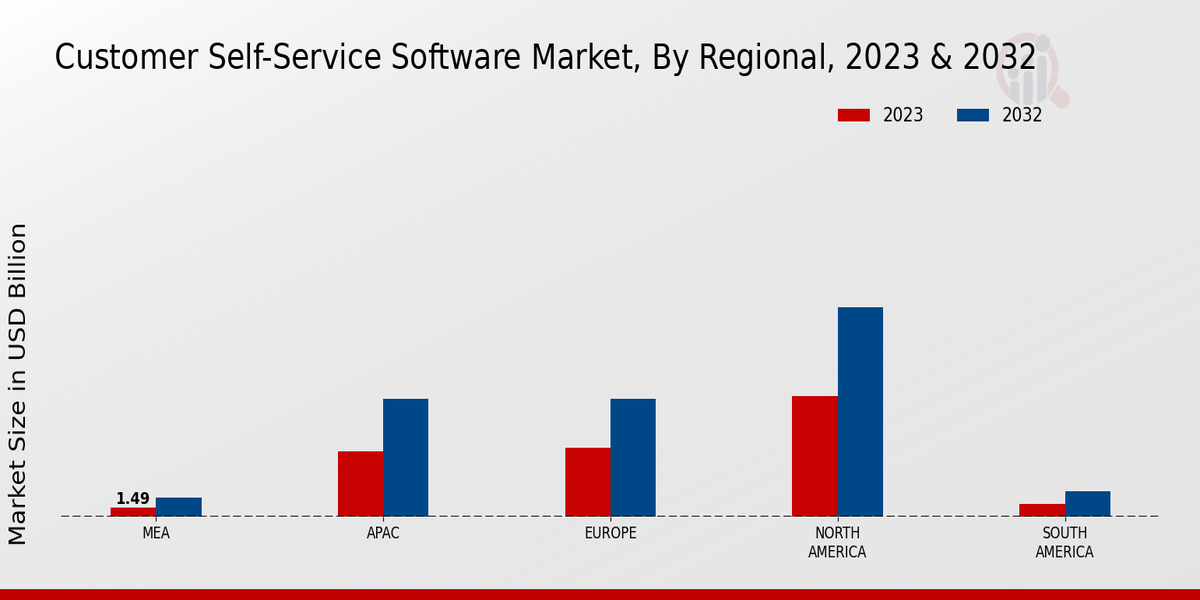The Customer Self-service Software Market is rapidly evolving as organizations seek to empower customers with tools that enhance their experience and streamline interaction processes. In this competitive landscape, various players are differentiating themselves through innovative features, integration capabilities, and intelligent automation. As businesses increasingly prioritize customer autonomy, self-service software has gained significant traction, with companies leveraging technology to offer user-friendly solutions that meet diverse customer needs. nderstanding the competitive nuances of this market is crucial for stakeholders who aim to position themselves effectively and leverage emerging trends that influence customer satisfaction and operational efficiency.
As customer expectations grow, the drive for self-service capabilities will continue to reshape industry dynamics.
ServiceNow stands out in the Customer Self-service Software Market with its robust platform that boasts exceptional strengths in service management and user experience. The company's integrated approach allows for seamless connection between service requests and knowledgeable resources, enhancing the self-service experience for users. With a focus on automation, ServiceNow offers intuitive workflows that empower customers to resolve issues independently while maintaining access to real-time support when needed.
Their strong emphasis on customization enables businesses to tailor self-service solutions according to unique customer demands, further solidifying their competitive edge. Additionally, ServiceNow's extensive market presence and established reputation enhance its credibility among organizations looking for reliable self-service options, contributing to customer loyalty and ongoing engagement.
LivePerson presents a compelling overview of the Customer Self-service Software Market by specializing in conversational AI and customer engagement solutions. The company emphasizes the importance of real-time communication and automated interactions, providing tools that allow customers to self-serve in familiar chat interfaces. LivePerson's innovative technology integrates AI capabilities, enhancing the self-service journey by offering personalized and contextually relevant responses that assist users in navigating inquiries efficiently.
Their strong market foothold, along with an advanced analytics platform, enables businesses to gather insights on customer interactions, improving service enhancement efforts. The unique focus on driving customer engagement through intelligent conversations positions LivePerson as a key player in the evolving landscape of self-service software, catering to organizations striving to create meaningful and self-sufficient customer interactions.


























